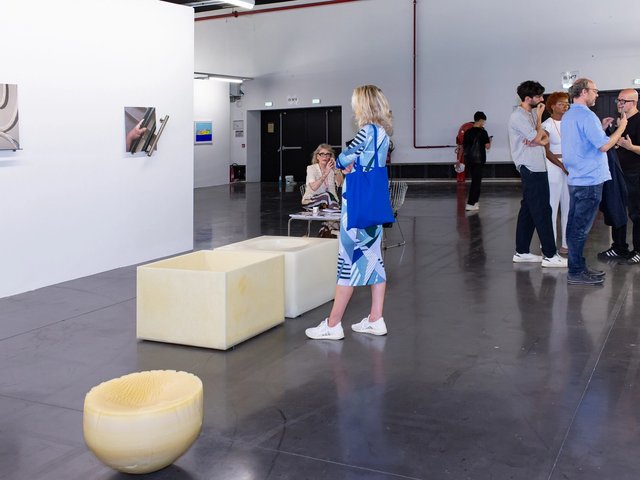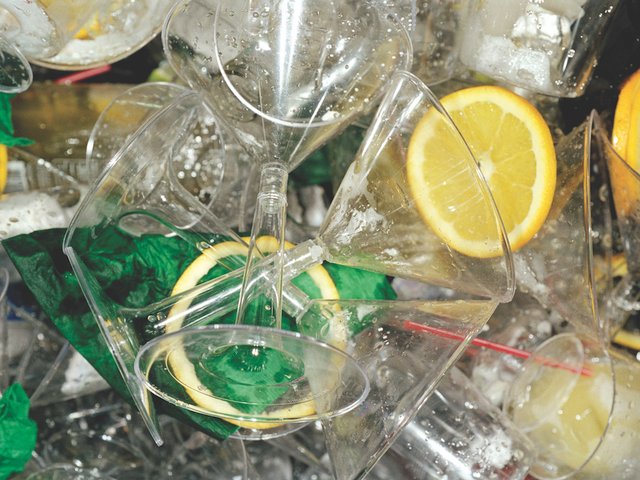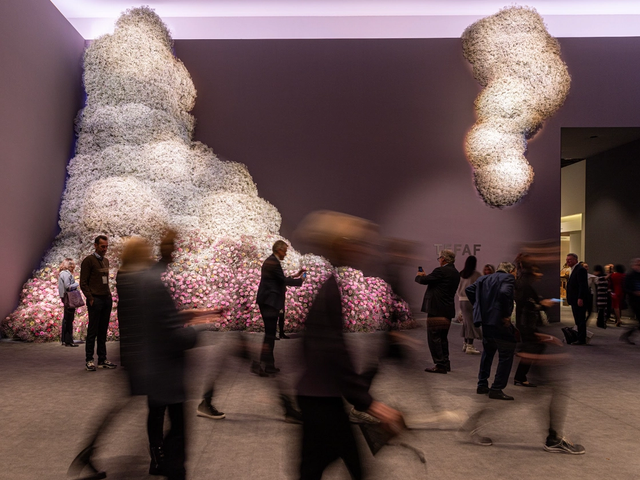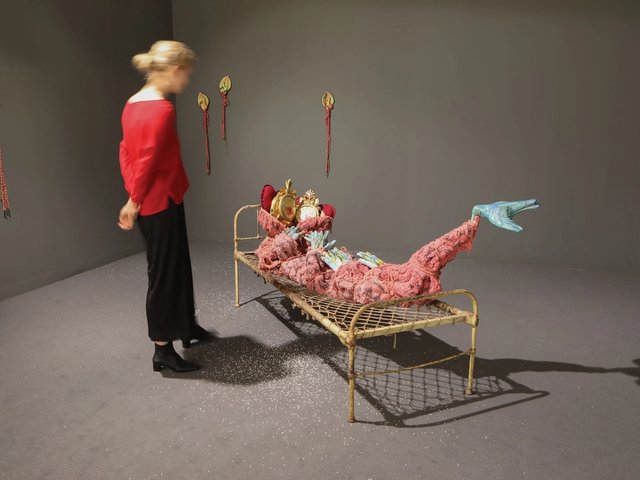The inaugural Art Week Riyadh (AWR), organised by Saudi Arabia's Visual Arts Commission (VAC) and held between 6-13 April, was, according to its website, "a non-commercial" curated exhibition of galleries; explicitly not a fair.
And yet, from the feel to the physical layout—its central exhibition saw 32 galleries take stands inside a central hall in the Jax district, a creative hub in Diriyah, northwest of the city—the event not only resembled an art fair, but largely functioned like one too. Dealers were encouraged to only bring available work which was ideally “museum-grade”, as one participant told The Art Newspaper. Price lists were seen on stands; sales were conducted during the event's run.
Titled At The Edge and organised by AWR's artistic director Vittoria Matarrese with associate curators Basma Harasani and Victoria Gandit Lelandais, the main exhibition featured galleries mostly drawn from Saudi Arabia and the wider region, spread across two halls. Standouts included a spare Ayesha Sultana cityscape at Experimenter, Mohamed Bourouissa’s installation of photos printed on compacted car body parts at Mennour, and two Mohammed Al Resayes canvases from 1985 at Hewar. A quad of Miramar Al Nayyar paintings at Tabari Artspace were mesmeric in their asemic, ribbon worm-like forms and otherworldly glow.
A moving image section presented films from ten artists, including Bani Abidi, Zineb Sedira and Theaster Gates, while Collections in Dialogue presented selections from three Saudi collections: Art Jameel, Ithra, and the SRMG (Saudi Research and Media Group).
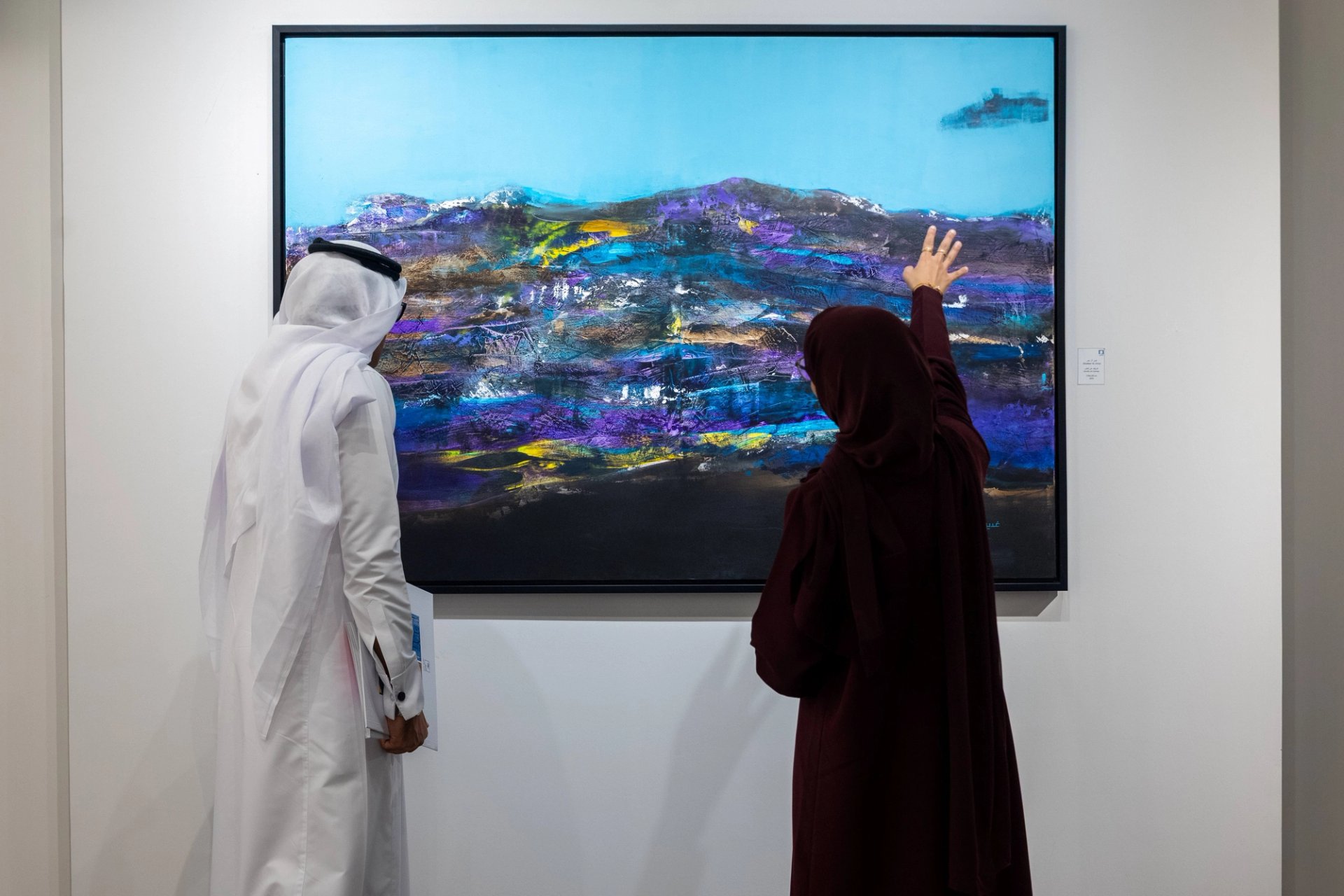
Visitors at the Al Mousa Center
Courtesy of Visual Arts Commission, Saudi Arabia
The satellite programme resembled that of a usual art week: an impressive lineup of open studios, numerous gallery shows, of which Basmah Felemban at Athr was a highlight, as well as organised tours geared towards introducing the international visitor to Riyadh and Saudi’s art ecologies. Especially commendable was the inclusion of Al Mousa Center in the programme, a mall of mostly Modern-focused galleries that have been largely sidelined in the new Saudi art scene.
The fair's organisers maintain the stance that AWR was not a commercial venture. “It's too long that people take galleries as vendors. For me, the work of a gallery, it's not to be a vendor … I wasn't looking for vendors,” said AWR's artistic director Vittoria Matarese. She adds that the scale of work in some presentations, as well as the installations placed between booths—including Kader Attia’s carpet of broken mirrors and a new Mohammad Alfaraj commission of palms sprouting from the walls and floors—further distinguish the exhibition from a fair.
The future of fairs?
Yet many exhibitors noted the hybrid feel of AWR, which boasted high production costs and included some less commercial work, as being halfway between an institutional show and a fair. “These events are interesting for educating the audience. It feels like a biennial, which they are already more or less accustomed to because they had two editions of the Diriyah Biennale, but it also has a feel of an art fair,” said Jal Hamad, a director at the Madrid-based Sabrina Amrani gallery, pointing out that this hybrid model is much less intimidating for new collectors who might not be familiar with how to deal with galleries or research artists.
Mohammed Hafiz of Athr is meanwhile enthusiastic about the sharp uptick in young Saudi collectors thanks to the Ministry of Culture’s efforts, a far cry from when his gallery launched 17 years ago. He explains: “I think the older collectors have already decided if they're going to be collectors or not, and they've decided what to collect. Is it Persian carpets, Islamic antiquities, or art? But the younger ones are still figuring out what to do. When you come to the Art Week, you see your peers there. ‘What did you buy? I bought this. Why don't you look at this?’ It just creates this dynamic.”
It’s a marked shift from the older tendency that VAC's chief executive Dina Amin points to: “Unlike, elsewhere in the world, where you have a very public engagement with collecting, cultural norms here often mean that people are very private.”
For dealers, there was less freedom than found at a usual fair: curators selected artists from each gallery roster to correspond to the exhibition's themes. There were far fewer risks too: dealers didn’t pay for space, production or shipping, only their flights and hotels if they wanted to attend; most did. Why wouldn’t they? Here was a rare chance to test out a new market, meet regional artists, curators, and art world power players, and answer the implicit questions: does Saudi’s historically weak commercial sector show promise? Can it hold its own against the regional juggernauts of Art Dubai, which was held just a week later and Art Abu Dhabi? With dealers reporting sales to individual Saudi collectors new to their programme and (as of the preview days) strong interest from Saudi institutions, the answers seem to be a resounding yes and yes.
“I like it, to be honest. Maybe this is the future of fairs,” said Sunny Rahbar, founder of The Third Line gallery in Dubai. “Less pressure on the galleries and the collectors, knowing that everything is for sale, but not feeling like you need to stay in the booth.” Hafiz agrees: “If you don't interact around art, then the conversations are not happening, the interest is not generated, the transactions don't happen. I think the art week idea is a very important one. It's the first commercial-centric initiative by the Visual Arts Commission.”
Commercial legislation issues
So why the insistence that this is non-commercial? One reason is that the works were imported on a temporary permit through the non-commercial Ministry of Culture, under which the VAC sits. What this means is that anything sold by non-Saudi galleries essentially has to be exported back to their home countries before being re-imported.
Saudi Arabia presently does not have any art-specific exemptions for imports either, so fees amount to a sizeable 20%—5% duty on fine art plus 15% VAT, though for dealers within the GCC (Gulf Cooperation Council) customs union—which is most of the participating international galleries—VAT drops to 5% if their annual export value is under around $100,000. While things move fast in KSA, federal legislation, as elsewhere, moves slowly. Amin notes that the VAC has recently launched a series of licenses that make setting up a gallery or organising an exhibition much easier, while cautioning that AWR "is about building a robust and inclusive network" and fostering "growth, opportunity for cultural enrichment”. As for what galleries might do, “that's their business, how they do their business, but it's not our business”.
Art Week Riyadh also provided an opportunity to connect with young, roving galleries mushrooming around the Gulf, like Bawa, Thaer Select and the participating Hunna. The Bahrain and Lisbon-based founder of Forat Gallery, focusing on unsung female Modernists from the Gulf, had launched just two days prior, and one Los Angeles-based collector was so taken with the dynamism of the Saudi art scene that he recently moved to Riyadh.
It remains to be seen whether AWR will embrace, or at least acknowledge, its commercial nature in future editions. Though perhaps that is a moot point. The line between the market and institutional sectors of the art world has never been so thin or faintly dotted. Galleries are regularly tasked with supporting production at museum shows and biennials, and even grande dames like Venice are among the most important marketplaces for art today: “the world’s best art fair,” as the collector Alain Servais once memorably dubbed it. And yet—a fair is a fair is a fair, isn’t it?



